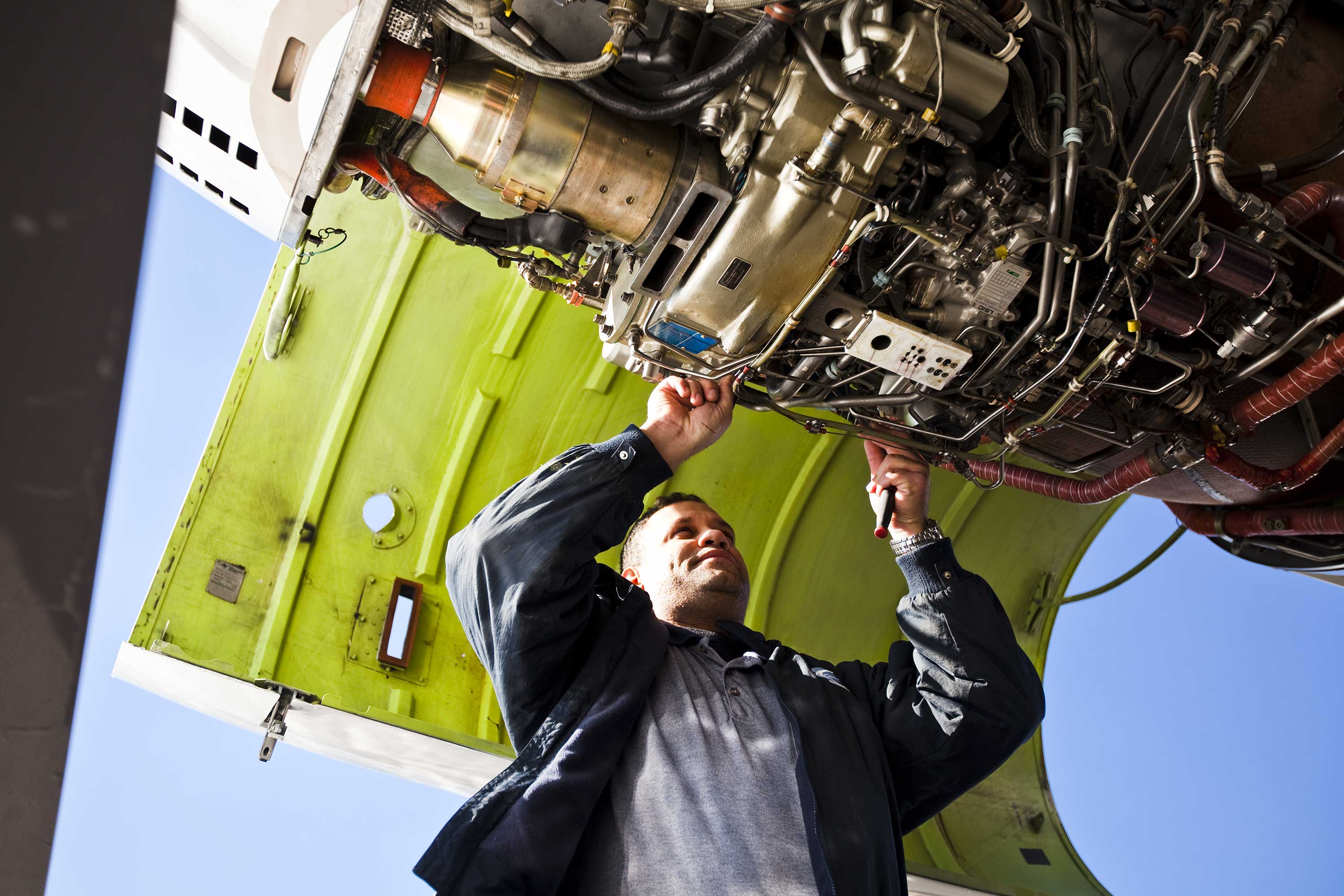
The Aircraft Maintenance and Facilities Operations focuses on management issues related to aircraft, facilities and ground support equipment.
The following NBAA Professional Development Program (PDP) objectives were adopted July 15, 2020.
Aircraft Maintenance and Facilities Operations Objective 1 (AF1)
Implement a system of Standard Operating Procedures (SOPs) for aviation department facilities and maintenance operations.
- Identify principles of an aviation department maintenance manual (e.g., regulations, Original Equipment Manufacturer [OEM] manuals, ground handling and servicing, duty times, fatigue management)
- Identify, develop and communicate key elements of relevant SOPs
- Identify hazards, associated risks and mitigation techniques (e.g., job safety analysis, maintenance risk assessment)
- Audit internal procedures for relevance and compliance (e.g., regulations, OEM procedures)
Aircraft Maintenance and Facilities Operations Objective 2 (AF2)
Maintain aircraft and components in accordance with manufacturer’s specifications and pertinent regulations.
- Identify applicable regulatory requirements and documents (e.g., Federal Aviation Regulations [FAR], Airworthiness Directives [AD], Original Equipment Manufacturer [OEM] manuals, Return to Service, and Minimum Equipment List [MEL] procedures)
- Determine appropriate airworthiness program (e.g., annual, progressive, phase, manufacturer recommended program, scheduled inspections)
- Identify methods to comply with manufacturer’s specifications and standard practices (e.g., maintenance control programs, procedures for inspections, repairs, prevention)
- Manage contract aircraft/engine maintenance and parts programs
- Recognize the importance of evaluating, selecting and incorporating pertinent technical data (e.g., service bulletins, Supplemental Type Certificate [STC], field approval)
- Identify components and importance of a tool control program
Aircraft Maintenance and Facilities Operations Objective 3 (AF3)
Ensure facility emergency preparedness for effective service and responsiveness in an emergency.
- Identify and develop key elements of facility emergency preparedness plan and equipment (e.g., general health, safety/emergency equipment and systems)
- Identify and communicate hazards, associated risks and appropriate responses (e.g., fire, weather, medical, security)
- Identify strategies to test and exercise the plan (e.g., training, tabletop exercise)
- Recognize relevant regulations and guidelines for tracking and maintaining emergency equipment (e.g., critical safety devices in facility)
Aircraft Maintenance and Facilities Operations Objective 4 (AF4)
Manage cabin information systems and passenger service items to ensure reliability, comfort and effective service.
- Identify characteristics and expectations of the end users
- Identify relevant regulations, security protocols and guidelines
- Identify and train the operational capabilities of the equipment and aircraft limitations (cabin power, additional appliances, basic troubleshooting, personal devices, lithium batteries)
- Explain the capabilities of available communication and information systems and cabin service components (e.g., Wi-Fi, video conferencing, internet)
Aircraft Maintenance and Facilities Operations Objective 5 (AF5)
Maintain availability of spares and supplies.
- Determine appropriate maintenance inventory levels and control procedures (e.g., inventory control software)
- Identify procurement resources (e.g., manufacturers, repair facilities and aftermarket vendors, suspected unapproved parts, costs)
- Maintain applicable aircraft maintenance documents, specifications and records
- Select appropriate methods and carriers for shipping, receiving, and storage of materials within regulations and guidelines (e.g., HAZMAT, Uniform Commercial Code [UCC], compliance with Occupational Safety and Health Administration [OSHA], Environmental Protection Agency [EPA])
Aircraft Maintenance and Facilities Operations Objective 6 (AF6)
Apply procedures to provide a secure facility for passengers, employees and assets.
- Identify key elements of facility security (e.g., Transportation Security Administration [TSA] and airport regulations, corporate policies, Fixed Base Operator [FBO] practices, airport security and access)
- Analyze and communicate hazards, associated risks and appropriate mitigation techniques (e.g., access control, badging, surveillance, lighting)
- Identify strategies for training the facility security procedures
- Manage facility security in accordance with established procedures (e.g., monitor, review and modify)


 International Business Aviation Council Ltd.
International Business Aviation Council Ltd.